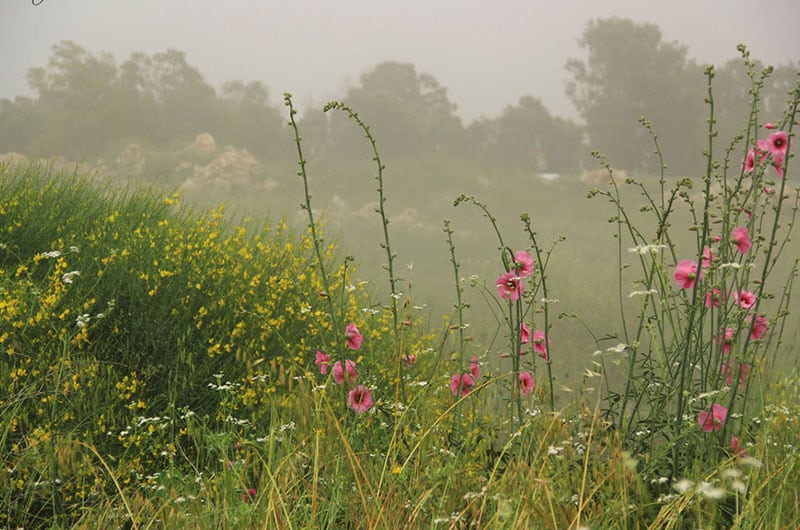by Robert P. Barsanti
June-uary has come upon us from the east. In this season, the visitors, the brides, and the bachelor parties race to the island with their daffodil swim suits, rent aqua bicycles, and head off to Cisco in cotton fog. When they arrive at the brewery, the young lady has soaked through her “Bride” tank top, and everyone else is hoping for a fire.
For all of the great blessings Nantucket has in store, the month of June isn’t one of them. In the rest of New England, the skies are clear, the wind is fresh, and the grass has been mowed several times. Golf balls fly out of bounds, the Red Sox are still in first place, and the first roses have bloomed on the wall.
On-island, June-uary hangs ten feet over our heads. A brisk and raw easterly wind leaves the island as cold as it was in January. Rain and mist alternate in canceling baseball games, boats, and airline flights. Puddles form, streets flood, and the moorings in the harbor remain empty. The winter that began back in early November stretches the last echoes of its stay deep into the summer. The sun burns through the mist for the occasional hour in the late afternoon, only to get smothered again in blue and gray.
The oldest Elm looms over the intersection by the school, and it drips rain on the cars below it. I was momentarily stuck there on Thursday morning and switched on the windshield wipers to clear off the dripping fog. The ceiling had sunk so low that the top of the tree disappeared twenty feet up.
Every so often, the designers who plan for summer visitors come up with a rotary for Five Corners. The intersection, they see with practiced eye, can never do for busy times (like August) when the golfers need to get to Miacomet. So, in order to free up traffic for that one month, they would like to eliminate the Coffin elm and replace it with a rotary for beachgoers. So far, the Elm has outlasted school buses, trash trucks, and drunk Maseratis. I hope it can outlast off-island consultants.
Those of us who have lived here long know that you never actually put the polar fleece and winter clothes away. Even in August, the sweaters stay out where you can wriggle into them on a wet night. The ocean is older than the land, and the ocean is cold and dark. The flowers might rent the roadside, but the ocean owns the sky.
Not withstanding the will of the water, the seasons creak into some sort of astronomical change. The first striped bass have swum up the Atlantic Coast, and then leaped into fog-wrapped boats. The songbirds have filled the weeds, and the dog can find dozens of rabbits to chase.
On one afternoon, in the few hours when the fog lifted, I found that my backyard had become green. The grass was overrunning its edges, the marsh grass has pushed up to the blackberry hedges and into the looming trees. Life reasserted itself, with firm and productive photosynthetic green. The normal life of natural law may have faded into a gray and brown timeless morass in the winter, but the quiet green work of leaves spread out once again, and brought my backyard life into its usual order. Our lives have sunk deep roots and spread out wide branches—inborn strength will slowly grow, then shove out the weak, the flashy, and the temporary.
Since November, I had grown used to the brown and gray of branch and leaf; the quiet, burnt out husk of a landscape that the winter leaves us with. It has its charms, like small red berries hidden among the swaying black branches. The hidden and handsome marsh hides in plain sight—so much so that it is easy to lose sight to what is there all along.
Sometime in the foggy darkness, amid the trickle of afternoon light and occasional Canadian afternoon, the dark leaves unfurled and went about their work. Unbidden, unasked for, uncalled, the trees spread out and declared their dominion.
Flowers are different. They push out of the gray and the brown with an flashy insouciance. First, a frail green stalk unfurls amid the mud. Then, in a slow crescendo, a bud emerges and then bursts into loud protest. They cluster in the side yard, protected in a walled-off bed, and burst forth with noise and color. The irises, the daffodils, the tulips draw your attention and your admiration for a weekend of more in their noisy celebration. Then they are gone. The wind takes their petals, their stalks bend to the earth, and the status quo returns in brown earth.
But not the trees. The trees stand witness until the first hint of yellow and red unrolls into the heavy shade of leaf and needle. New branches shove into the air, the roots dig deeper into the ground, and biology becomes more stout and stalwart. Long after the noisy protest of the flowers has faded into mist, the trees endure and expand.
We live in a time of noise and change. In any given hour, a new bloom emerges in the electric garden. We can stare at each blossom and count out its bloomed life in headlines and re-tweets. Then, as it fades into the mud, another little flower takes its place, only to bloom, die, and be replaced on the next sunny day. Better to be the tree, with thick roped branches and deep-set roots, growing with vegetable strength, and emerging in silent dominance on a foggy morning.



